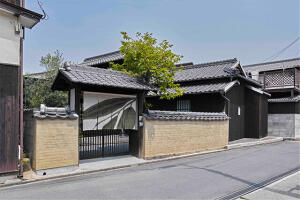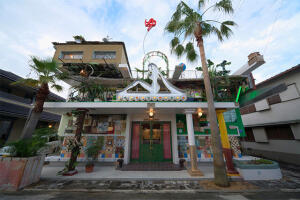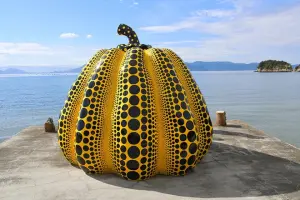Buses run 1 to 3 times per hour from Miyanoura Ferry Terminal to Tsutsujiso, stopping at the Nokyo-mae bus stop in Honmura (5 minutes, 100 yen). Alternatively, you can bike (10 minutes) or walk (35-45 minutes) the 2.5 km. Honmura also has its own port with ferries to Uno Port on Honshu (20 minutes, 300 yen, with five trips a day).
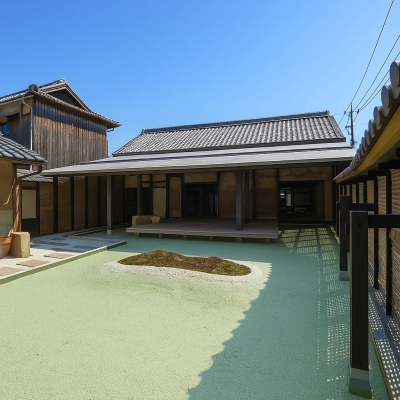
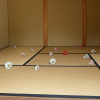
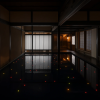

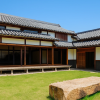
Art House Project
Honmura (本村) is a picturesque port town located on the eastern coast of Naoshima, renowned for its Art House Project. This distinctive initiative has transformed abandoned houses, a temple, and a shrine, all of which have been converted into contemporary art spaces, each offering a unique artistic experience. Japanese and international artists have reimagined these structures, turning them into galleries that harmoniously blend with the traditional Japanese neighborhood. While the exteriors may appear modest, the interiors are bursting with creativity, with each space offering a different interpretation of art and design. The integration of art into everyday life in Honmura creates a fascinating contrast between the old and the new, inviting visitors to explore the town through the lens of artistic innovation.
As visitors stroll through the narrow streets of Honmura, they can discover a wide range of artistic expressions scattered throughout the town. The Art House Project allows guests to experience the tranquil atmosphere of the town while engaging with thought-provoking artworks. Each art house presents a different concept, from immersive installations to sculptural works and multimedia pieces. For those with a passion for contemporary art, the Art House Project is an essential stop, offering an unforgettable opportunity to experience how art can breathe new life into forgotten spaces and connect deeply with the local culture.
Art venues
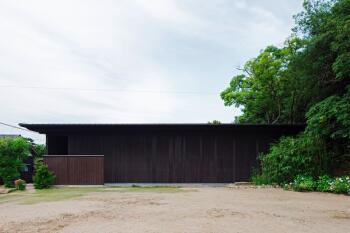
Architecture by Ando Tadao and artwork by James Turrell
Minamidera is a new building, constructed on the site of an old temple, and designed by renowned architect Ando Tadao, who also designed Naoshima's art museums. Inside, you'll find James Turrell's artwork Backside of the Moon, which plays with light and your perception of it. Visitors are allowed to enter the building every 15 minutes, and it is recommended to make reservations in advance.
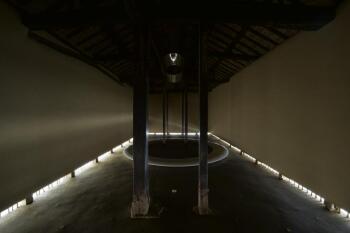
Designed by Naito Rei
Kinza is a small, 200-year-old house that has been transformed into an artwork, showcasing traditional building design and craftsmanship. Located next to Gokaisho, it is open for visits from Thursday to Sunday, with advance reservations required. Visitors are allowed to enter the building one at a time for a maximum of 15 minutes. It is recommended to make reservations in advance.
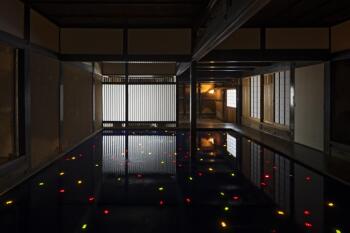
Miyajima Tatsuo
Kadoya is a 200-year-old house that has been restored and features a traditional storehouse. It showcases various artworks, including an LED display in a pool of water, a window turned into a digital screen, and a unique Japanese scroll painting.
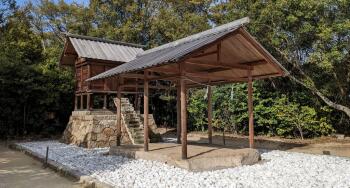
Designed by Sugimoto Hiroshi
Go'o Shrine is an ancient Shinto shrine that has been restored with a modern touch. A glass staircase leads from the worship hall to an underground chamber, symbolizing the connection between heaven and earth. Visitors can access the underground chamber through a small side entrance.
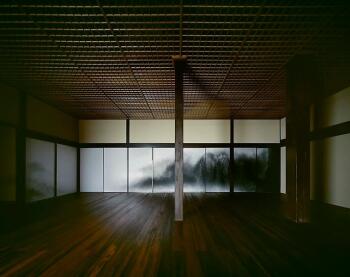
Artwork by Senju Hiroshi
Ishibashi was built around 100 years ago as the home of a successful salt merchant. It has since been restored and now showcases two large paintings by Senju Hiroshi. One painting is on the sliding doors of the main building, while the other, depicting a beautiful waterfall, hangs in the nearby storehouse.
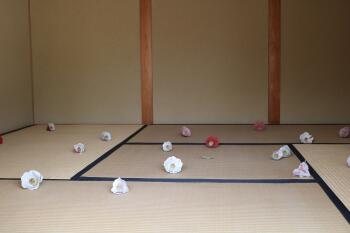
Artwork by Suda Yoshihiro
Gokaisho was built on the site where people used to gather to play Go, a traditional Japanese board game. The building has a traditional design, with hand-carved wooden camellia flowers placed on the tatami mat floors. The rooms offer views of a small garden with real camellia flowers, creating a beautiful contrast with the wooden ones inside.
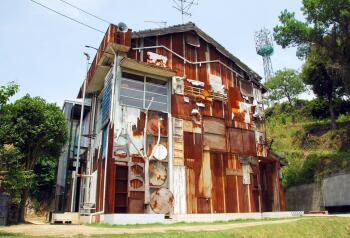
Artwork by Otake Shinro
Haisha is a former dentist's home and office that has been converted into a gallery showcasing large sculptures. Some of the sculptures can be viewed from different floors of the two-story house. One of the artworks is a replica of the Statue of Liberty. The artist, Otake, also designed the "I Love Yu" bathhouse.
Hours and Fees
- Hours
-
10:00 AM to 4:30 PM (last admission 4:00 PM)
- Closed
-
Mondays (or the following day if Monday is a national holiday)
Kinza:
Kinza is closed on Tuesdays and Wednesdays
- Price
-
A combination ticket for all houses (except Kinza and Minamidera) costs 1,400 yen (1,200 yen if purchased online). You can also buy individual tickets for 700 yen per house (600 yen online). It is highly recommended to make advance reservations, especially for Kinza and Minamidera.
Buy tickets here →
